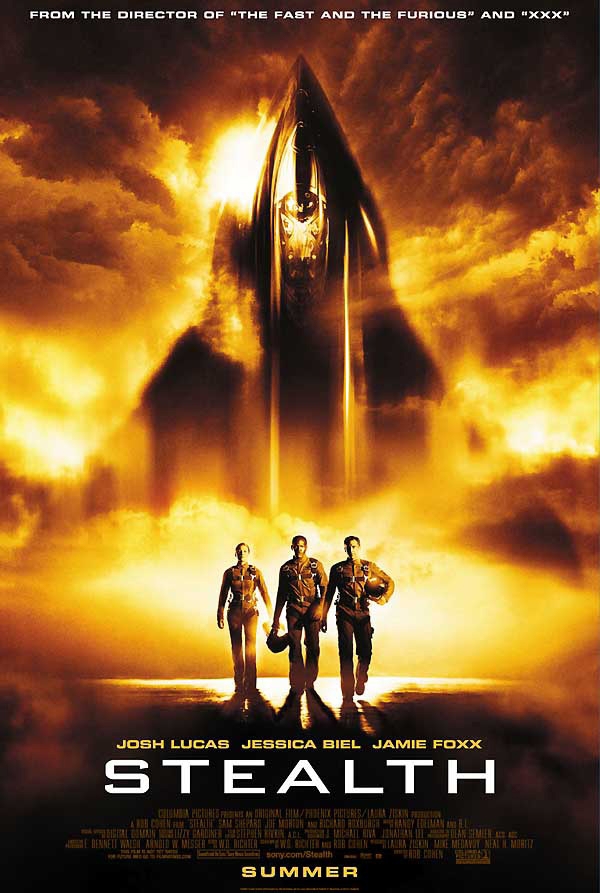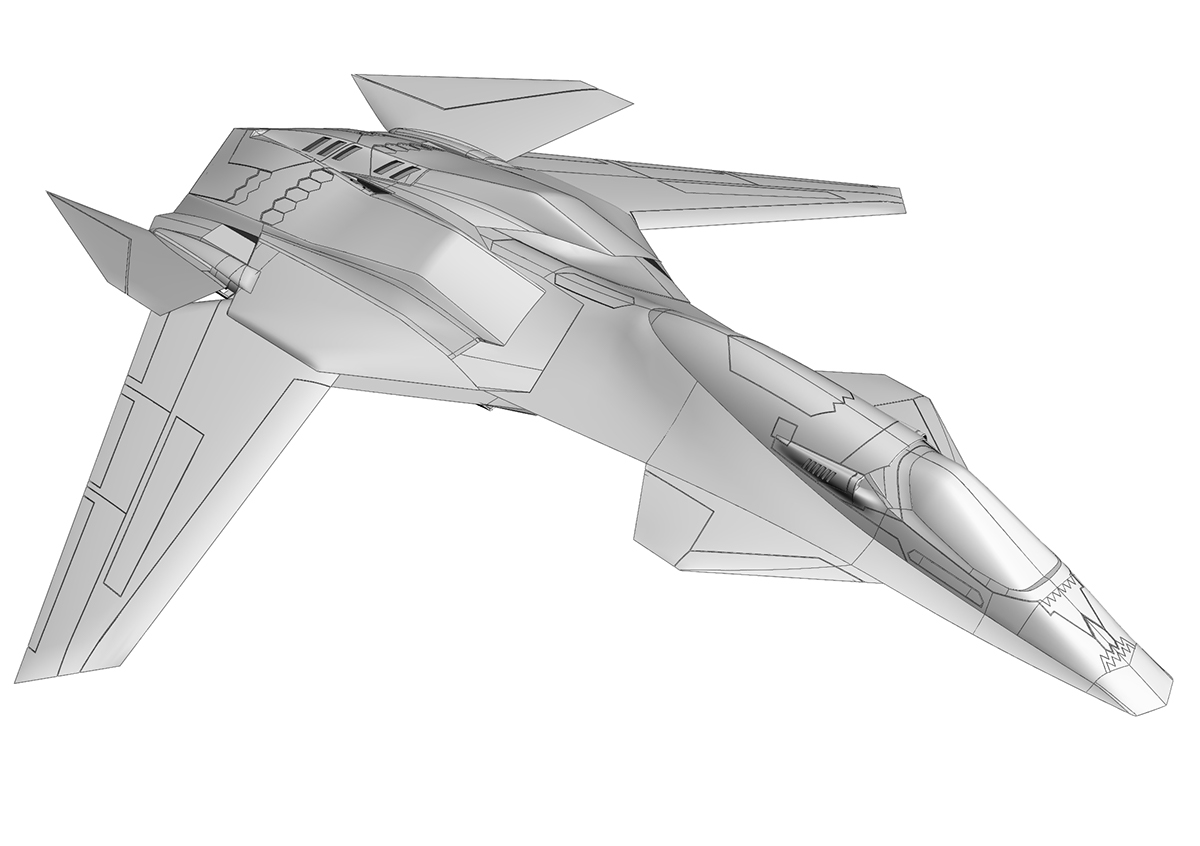
Deeply ensconced in a top-secret military program, three pilots struggle to bring an artificial intelligence program under control before it initiates the next world war.
Production Designer: Johnathan Lee

The digital modelling and design of the aircraft exteriors started in L.A. Cockpits and undercarriage were designed in Sydney. We also modified the exterior design of both the Talon and EDI for practical reasons: Wings were thickened to be structural, and the fuselage was beefed up to fit in practical things like the bomb bays and landing gears.

The interior cockpit of both Talon and EDI were designed in Sydney.


Edi’s original cockpit design was too small to fit a person, so the exterior design had to be enlarged, yet still retain the feel of the original design.

Construction costs for the planes were: EDI approx AU$1.2M, The Talon approx AU$1.5M. They took around 16 weeks to build not counting concept and drawing time.

The Talon had to be broken up into 20 pieces for transportation. It was shot in the studio at Fox; out at Schofields; the Blue Mountains; and travelled overseas to be shot on the deck of the US San Diego, a working aircraft carrier at sea. In the end it travelled to back to L.A.

We started out constructing it using the lightest possible methods. But to be shot on the aircraft carrier, the US navy required it to be able to withstand gale force winds while on deck, so in the end it became heavily engineered.

Edi was a smaller aircraft and broke in about 5 pieces. Edi travelled to three 3 places: It was shot in the studio, out at Schofields (black base), and the Blue Mountains.

The cockpit design started as a 3D massing model, based on reference and ergonomics. This was then given to concept artist Phil Shearer to design the instrumentation.

The finished cockpit on set.

As well as the full size planes we built cockpit bucks to put on a gimbal.

To articulate the movements of the plane, a gimbal controller sat near the director in what looked like a small rowing machine with joysticks and pedals.

As well as a cockpit buck for EDI, we built a breakaway cockpit which allowed the camera to get in for closeups.

To construct the planes we used modern boat building techniques. Using the 3D model we cut sections through it at required intervals, then used these sections to drape our skin over.

The skin and internal structure was made from Klegecell, an expanded foam product which is very light, but when sandwiched between fibreglass and resin, becomes extremely strong. The spines were reinforced with plywood. This photo shows the cutout for the Talon wing housing here.

Here’s a shot of the pivot point for the wing. The Talon had articulated wings, and the point-loads around this pivot were considerable.

For some of the tighter curves where the Klegecell wouldnt form, we filled the area between the formers with foam and faired the shape in by hand.

A shot of the Talon starting to come together.

The EDI, fully skinned.

Because the Klegecell skinning material was so expensive, it was helpful to get surface area calculations for the different parts of the planes. Once you have the 3D digital model,extracting information for surface area, mass, and center of gravity is very easy.

EDI was so organic on the outside that Jonathan wanted the interior to be organic and futuristic as well. Again, we started with a quick massing model showing the general ergonomics and dimensions which concept artist Matt Saxon used to create the concept illustrations above.

I then developed these illustrations into a 3D model which was sent to a 5 axis CNC milling company in QLD who delivered one of these. The finish was so smooth we didn’t even need to sand it before putting it in the mold. The panels were millimeter perfect and included all the rebates for our acrylic panels to sit into.

You can imagine how pleased we were to open the packing crates to find these.

We also got some moulds cut to form the acrylic panels for the seats. As all the pieces were generated from the same 3D model, we were confident that all the pieces would fit together.

Once the fibreglass seats were molded, they got framed in steel and wired up with props, lights and electronics.
Here is Graham Beattie wiring up one of the chairs.
Here is Graham Beattie wiring up one of the chairs.

A shot of the finished cockpit. The chair and "brain" raised and lowered on camera.

The completed EDI on set.

And the Talon.

